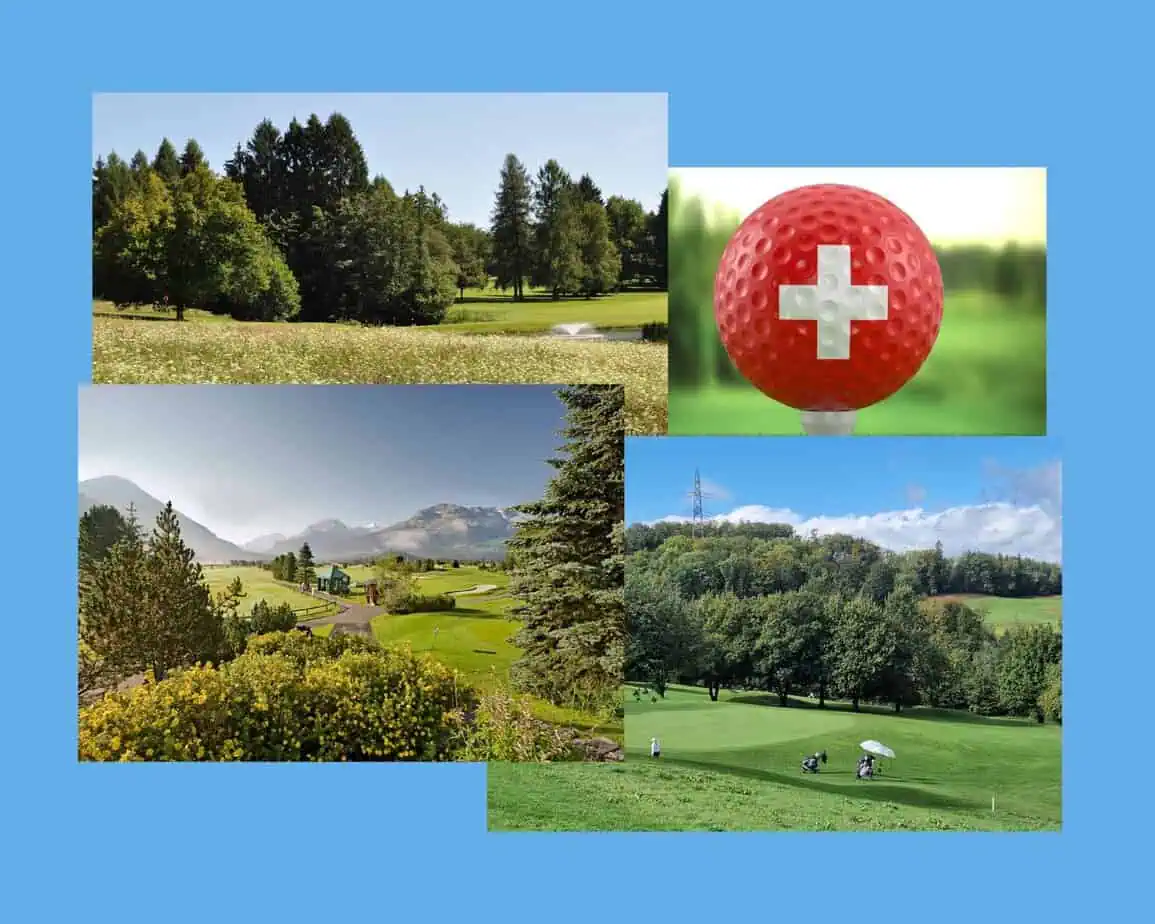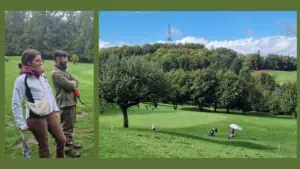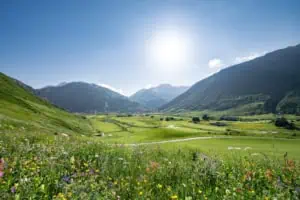Swiss Golf: “We don’t force, we convince”
“We don’t force – we convince”. With this core principle, Swiss Golf is pursuing its Golf Course 2030 Switzerland sustainability strategy, which is one of the most ambitious in Europe. Published in October 2020, the strategy formulated goals in various areas. Biodiversity, pesticides, water and energy have been at the heart of the program ever since.
First assessment after four years
Four years on, Swiss Golf can now take a résumé. What has become of the ambitious goals? How are other associations and authorities reacting to Swiss Golf’s projects? And how can all those golf courses that are not among the financially strong, motivated early adopters, as they are often called in the project language, be convinced of the sustainability strategy? “45 out of 98 golf courses whose clubs are members of Swiss Golf are now GEO certified,” summarizes Alicia Moulin, responsible for sustainability at Swiss Golf and now also at the European Golf Association, when we meet her at the Domaine de Brésil golf course near Lausanne. Swiss Golf decided in favour of the partnership with the Scottish service provider and its certification and has set itself the goal of certifying all golf courses. Swiss Golf is weakening financial counterarguments by providing strong support. Swiss Golf is supporting the first GEO certification with CHF 2,500 per club, with the ASGI organization, an association of club-free golfers, contributing CHF 500.
So the problem for the clubs, when it comes to action, is not the finances. This quickly becomes clear at Domaine de Brésil. Rather, it is the availability of time and personnel that makes a stronger commitment to environmental protection difficult. Domaine du Brésil is a small course with 9 holes, built in 2004 on former agricultural land without a golf course architect and with a great deal of personal input. The terrain is pretty but not easy with its many sloping areas. Greenkeeper Kevin Ravier works here with a small team. The budget doesn’t allow for more. He is motivated, creates extensive areas and takes care of the new plantings. “But we can’t do much extra work.”
Certification was achieved in November 2022. “The data was a problem. We started from scratch,” he explains the process. In the meantime, Swiss Golf has also hired a working student who is now breaking down the last barrier to participating in GEO. “He enters the data together with the club employees and compiles it,” sums up Moulin, who has realized that this is the only way to achieve the association’s goal of 100% certification of all golf clubs. It is a laborious procedure, but Swiss Golf has decided to make the effort.
Kevin Ravier at Domaine de Brésil looks at his greens. They are simply built greens without a good structure, which doesn’t make drainage and dealing with grass diseases any easier. He is working on a change in greenkeeping, away from the use of pesticides. According to Moulin, there is also an ambitious association goal: “We are supporting our members to be able to manage 100 % of the areas synthetically pesticide-free by 2030.” Swiss Golf also formulated this goal in 2020. “The level of legislation in this area is already very high,” explains Moulin. “Nevertheless, our aim is to raise awareness that the clubs need to do something because legislation and new regulations will require this in the future.” Swiss Golf has neither the means nor the intention to control the use of pesticides on site. “Our role is to identify and counteract risks, ” Moulin clarifies.
Investing in research and teaching
The work of convincing greenkeepers and decision-makers in the clubs, therefore, takes place on a different level. “We impart knowledge and invest in research.” Swiss Golf is currently involved in a research project with Wallonia, partly funded by the R&A, which is looking into the grass disease dollar spot in the two countries and organizes two annual workshops together with the Swiss Greenkeepers Association and the Managers Association, which deal intensively with particular topics.
Swiss mean value for biodiversity
The association has its first major success stories to report in the area of biodiversity: Together with the Sempach Ornithological Institute, an internationally recognized research institute, the habitats on golf courses were evaluated with the help of orthophotos. Two interns were also seconded to Swiss Golf to assist with the development and test phase of the methodology. At the end of the project, a Swiss average value for biodiversity was achieved, which can be used as a point of comparison for all golf courses that can and want to improve their biodiversity. “We are quite proud of this,” says Moulin. “As far as I know, we are the first in the golf industry to provide a benchmark for biodiversity.” Data is the basis for the success of Swiss Golf’s sustainability strategy. “We need to know where we stand,” says Moulin several times. This applies not only to pesticides and biodiversity, but also to water consumption and the use of energy. Together with the Swiss Federal Office of Energy, Swiss Golf is now supporting the costs of an external energy audit, which actually costs CHF 5,400. A third of the clubs have taken up the offer so far.
“We are doing a lot,” summarizes Moulin. She knows: “To make it possible to achieve the ambitious sustainability goals”, Swiss Golf must be active as a sponsor and supporter when it comes to personnel and implementation. Otherwise, the success curve will remain stuck in midfield after a rapid rise at the beginning. Financial problems, uninterested decision-makers, conflicts with authorities or the membership – there are countless reasons for deciding against involvement in GEO certification or the “Golf Course 2030 Switzerland” strategy, as the sustainability manager has long recognized. “It doesn’t work without support,” is the conclusion after four years. Support doesn’t just mean money, but above all employing staff with expertise plus a constant presence on golf courses. On this day, Moulin is standing in front of a tiny pond at Domaine de Br’esil, beautifully landscaped and already well planted along the edges. But the width of the edge is still not enough for her. “Three meters would be ideal,” she explains to Ravier and tries to win him over for the biodiversity project in the same place. Her chances of success are high: while an email quickly ends up unread in the waste paper bin, personal contact is a winner. The motto “We don’t force – we convince” becomes reality. And Swiss Golf’s sustainability strategy has gained a little more ground.









